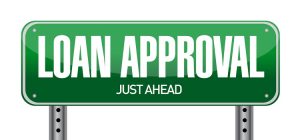Buying a home in 2025 comes with exciting opportunities and new challenges. Whether you're a…

10 Steps in the Home Buying Process
Here are the next three steps
 Guide to the 10 steps in the home buying process
Guide to the 10 steps in the home buying process
If you’re thinking of buying a home and you’re not sure where to start, you’re not alone. Here’s a guide with 10 simple steps to follow in the home buying process. Be sure to work with a trusted real estate professional to find out the specifics of what to do in your local area.
Steps 1-3 Can be found here: The Home Buying Process – 10 Steps for Success
Step 4: Pre-Approved for a Loan
As evidenced by this list, it might take some time to financially prepare to buy your first home. All of that is important because it leads you to a crucial home buying step: securing a loan.
· Pre-qualified vs. pre-approved
You might have heard two terms when it comes to getting initial bank approval for a home loan: pre-qualification and pre-approval.
Pre-qualification happens when you submit your financial information to a lender, either over the phone or online, and they provide an approximate home price you can afford based on that information. This is not a guarantee for a loan; it’s more of a snapshot to let you know where you stand. Think of it as the first step in actively searching for a home to buy.
If you do not get pre-qualified based on your financials, you know that you have to continue to work on your credit, save more for a down payment, and do whatever else is needed to purchase a home.
If you do get pre-qualified, you can begin looking for a buyer’s agent. Eventually, you will need to get pre-approved for a loan, which is different from pre-qualification.
· Requirements for pre-approval
Mortgage pre-approval is more official than pre-qualification. Pre-approval acts as a conditional commitment from the bank to give you a mortgage. As such, you’ll need to provide a lot more information than you did during the pre-qualification process.
Here is a list of documents your lender will likely request during pre-approval
- Proof of income
- Proof of assets
- Employment verification
- Identification documents
- Social Security numbers to run credit
After your lender reviews these documents and determines that you’re a good risk (meaning you’ll pay them on time and not default on your mortgage), you’ll get an official pre-approval letter. The pre-approval letter is a key piece of the home buying process. It demonstrates that you’re serious about purchasing a home and that you have the money available to do so. In fact, some listing agents won’t even show homes to prospective buyers who haven’t been pre-approved.
Having that letter removes the risk of you being denied a loan after making an offer. It also often makes listing agents more willing to work with you.
Step 5: Settle on Where You Want to Live

When you’re deciding to buy a house, you also need to decide where you want to live. It might seem like you already have the answer or even know the exact neighborhood you prefer, but it’s important to keep an open mind when you’re buying a home.
- What to know about desirable neighborhoods
- Consider school districts
- How long do you want to live there?
Step 6: Find a Home You Love

· Research homes online
You can browse public listings on sites like Zillow or your real estate agent might give you access to a private portal that shows you homes that match the criteria you want. You can continuously refresh this portal to find the newest homes for sale in your desired neighborhoods.
This is especially beneficial if you’re in a competitive housing market where homes go quickly.
· Visit a lot of homes
Your buyer’s agent should ask you for a list of the things you want in a home. It’s okay to be as detailed as possible; give them your comprehensive wish list for your ideal home. Ultimately, you might not be able to get everything on your list, but it will give your agent a good idea of what you’re looking for.
· See beyond the decor
If you are adept at seeing beyond decor, you could also get a great deal on a home. For example, you might tour a nice, well-built home with the layout you want, but it’s full of floral wallpaper. Many buyers might be put off by all the work that removing wallpaper entails. But if you can see beyond it, you might get a solid house for a good price.
· Visit homes in your price range
Make it clear to your real estate agent ahead of time that you only want to visit homes in your price range. If you can’t find a home you like, your agent might try to convince you to increase your budget by $10,000 or $20,000 so you can get certain features you want in a home.
It’s important to stick to your budget because if you start out with something you can’t afford, it could become a hindrance. You don’t want to be house poor before you even get the keys.
National Buyers Agent Association has a network of top-rate fiduciary buyers agents, and brokers. Buyer agents mostly have well-established connections to other business professionals who can help make your move less stressful. Simply communicate your needs by filling out the online form where you can get immediate results. Also, the association manager, Kathleen Chiras, and her staff will contact you back as soon as possible. For faster access to top buyer agents, fill out the form or call 800-383-7188, Mondays through Sundays.
See our next blog next one for steps 7-10!





